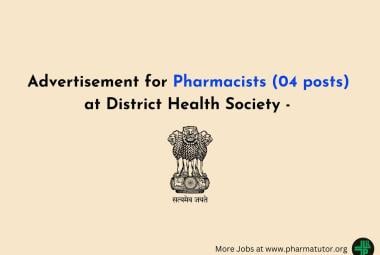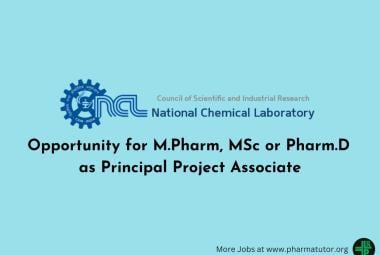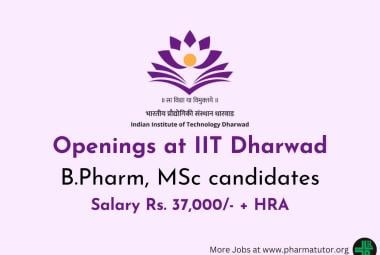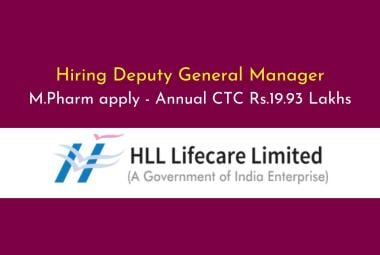{ DOWNLOAD AS PDF }
 ABOUT AUTHORS:
ABOUT AUTHORS:
R.Meera1*, N.Swathylakshmi2, M.Sundarapandian2, P.Raja Soundara Pandian1, Madhavanmallayasamy1
1Researcher, Radianz Health Care Pvt Ltd, Madurai, Tamilnadu, India
2Department of pharmaceutical chemistry, K.M.College of pharmacy, Uthangudi, Madurai, India
meeraharsa23@gmail.com
ABSTRACT
Objectives:
A simple spectrophotometric method was developed and validated for the determination of Nitaoxanide in pharmaceutical dosage forms. Two visible spectrophotometric methods have been described for the assay of Nitaoxanide bulk form or dosage forms.
Methods: Method A is based on the formation of Schiff’s base and it was condensed with 4 hydroxybenzaldehyde. Method B is based on diazotization and coupling method with phluroglucinol. The methods are done in UV Visible spectrophotometric method having maximum absorbance at 460 nm.
Results: Regression analysis of Beers law plots showed good concentration range of 10-50µg/ml for method A and B and gives reproducible results.
Conclusion: Due to its simplicity of the method it may be used for determining Nitaoxanide in bulk and dosage forms.
[adsense:336x280:8701650588]
REFERENCE ID: PHARMATUTOR-ART-2281
|
PharmaTutor (ISSN: 2347 - 7881) Volume 2, Issue 11 How to cite this article: R Meera, N Swathylakshmi, MS Pandian, PRS Pandian, M Mallayasamy; Spectrophotometric Methods for the Determination of Nitaoxanide in Bulk Drug and its Pharmaceutical Formulation; PharmaTutor; 2014; 2(11); 120-127 |
INTRODUCTION
Nitaoxanide is a synthetic nitro thiazolyl-salicylamide derivative approved for the treatment of infectious diarrhea [1] caused by Cryptosporidium parvum and Giardia lamblia. This novel agent has a broad spectrum of activity against many other gastrointestinal pathogens, including bacteria, round worms, flat worms and flukes. Nitaoxanide is used in many areas of the world, especially in Central and South America, as broad-spectrum parasiticidal agents in adults and children. In oral administration it is rapidly hydrolyzed to its active metabolite, Nitaoxanide, which is observed 1-4 hours after administration. It is excreted in the urine, bile and faeces. Chemically known as 2-[(5-nitro-1, 3-thiazol-2-yl) carbamoyl] phenyl acetate. A number of methods such as spectrophotometric [2-8], colorimetric [9.10] HPLC [11-13], HPTLC [14], RP HPLC [15-18] for the estimation of Nitaoxanide. The present communication describes 3 UV spectroscopic methods in bulk form and dosage form by using different reagent 4-hydroxy benzaldyhyde and phluroglucinol having maximum absorbance at 460 and 450 nm.
[adsense:468x15:2204050025]
EXPERIMENTAL
INSTRUMENTS
A Perkin Elmer EZ 301 UV Visible double beam spectrophotometer with 1cm matched quartz cell was used for the spectral and absorbance measurements. The analytical balance shimadzu is 0.1 mg. The electronic balance AY220.
REAGENTS
All the chemicals and reagents were of analytical grade and the solutions were prepared in distilled water. Aqueous solution of 4 hydroxybenzaldehyde and Conc. HCl were prepared for method A. Aqueous solutions of sodium nitrite and Ammonium sulphate and phluroglucinol were prepared for method B for diazotization reaction and coupling method.
ANALYTICAL PROCEDURES
METHOD A[19]
Preparation of 4-hydroxy benzaldyhyde (2%)
It was prepared by dissolving 2g of 4-hydroxy benzaldyhyde in 100ml methanol.
Preparation of standard stock solution
25mg of Nitaoxanide was dissolved in 5ml of methanol and was treated with 2.5ml 5N HCl and 200mg Zn powder with continuous stirring for 20mts at room temperature. It was then filtered and the residue was washed with methanol. Then the volume was made upto25ml with methanol (Stock solution Ι, 1000µg/ml)
Absorption spectra of coloured species
5ml of standard stock solution Ι was pipetted into 50ml volumetric flask and it was diluted to 50ml with methanol (Stock solution ΙΙ, 100µg/ml). From this 3ml was pipetted out into 10ml volumetric flask and 1ml of 2% 4-hydroxy benzaldyhyde, 1ml of Conc. HCl were added and kept aside for 5mts. The volume was made up to 10ml with methanol. The final volume concentration of the solution was 30µg/ml. The absorbance was measured between 340-480nm against reagent blank. Readings were shown in Table no:1 and plotted in Graph no:1
METHOD B
Spectrophotometric determination of Nitaoxanide by diazotization coupling method using phluroglucinol[20]
Preparation of 4N HCl
It was prepared by dissolving 34ml of conc. HCl in 100ml distilled water.
Preparation of 0.1%w/v sodium nitrite
It was prepared by dissolving 0.1g of sodium nitrite in 100ml distilled water.
Preparation of 0.5%w/v of ammonium sulphate
It was prepared by dissolving 0.5g of ammonium sulphate in 100ml distilled water.
Preparation of 0.5%w/v phluroglucinol
It was prepared by dissolving 0.5g of phluroglucinol in 100ml distilled water.
Preparation of standard stock solution
10mg of Nitaoxanide was accurately weighed and dissolved in 5ml methanol. The methanolic solution of Nitaoxanide was treated with 200mg of Zn powder and 2.5ml of 4N HCl and kept aside for 1hour at room temperature. The solution was filtered and the volume was made up to 10ml with methanol. (1000 µg/ml).
Absorption spectra of coloured species
5ml of standard stock solution I was pipette into 50ml volumetric flask and made up with methanol. From this 3ml was pipetted out into 10ml volumetric flask followed by the addition of 1ml conc. HCl, 1ml of 0.1%sodium nitrite, 1ml of 0.5%w/v ammonium sulphate and 1ml of 0.5%w/v phluroglucinol were added. Finally the volume was made up to 10ml with methanol. The final concentration of the solution was 30µg/ml. The absorbance was scanned between 400-500nm against reagent blank. Readings were shown in Table no 2 and plotted in Graph no 2.
BEERS’S LAW PLOT
Beer’s law states that the fraction of the monochromatic radiant energy absorbed on passing through a solution is directly proportional to concentration of the absorbent.
Log10 I0/It=K.C
where,
K-Proportionality constant
C-Concentration
I0-I intensity of incident light
It-Intensity of transmitted light
Having fixed other parameter, Beer’s law plot was constructed by measuring the absorbance of various concentration of drug solution against reagent blank.
5ml of stock solution-1 was pipetted in 50ml volumetric flask and made up to 50ml with methanol. The concentration of solution was 100µg/ml (Stock solution-II). From stock solution II, various aliquots of 1ml, 2ml, 3ml, 4ml and 5ml were pipetted out into a 10ml volumetric flask followed by addition of 1ml, 2% 4-hydroxybenzaldehyde and 1ml conc. HCl and kept aside for 5mts.The volume was made up to 10ml with methanol to produce concentration in the range of 10-50µg/ml. Absorbance of each solution was observed at 460nm against reagent blank. The readings were recorded in Table no 3and graphically plotted in Graph no 3.
INTERFERENCE STUDIES
The interference studies of additives used in the formation of tablet were done by distributing them individually in distilled water and set aside for 10mts before filtering. The filtrate was diluted and preceded as per tablet assay and the absorbance was measured at 460nm against reagent blanks. This procedure was repeated 5 times of each additive and the average value for each additive was given the following Table no 4.
RECOVERY STUDIES
In order to justify the reliability and suitability of the proposed method, recovery studies were carried out. The recovery experiment was performed on Nitaoxanide tablet. The powder equivalent to 25mg was accurately weighed and dissolved in 5ml methanol and was treated with 200mg Zn powder and 2.5ml 4N HCl with continuous stirring for 1hr at room temperature. It was filtered and washed with methanol. An aliquot of 5ml of standard solution (1mg/ml) of pure sample of Nitaoxanide was added to the flask. It was shaken well and the volume was made upto 25ml with methanol and the procedure for the assay of Nitaoxanide was followed. The experiment was repeated 5 times. The results were recorded in Table no 5. The percentage recovery was calculated by using the formula:-
% of Recovery= 100
PRECISION[21]
The precision of an analytical method is the degree of reproducibility among the individual test results when the procedure was applied repeatedly to multiple sampling of homogenous sample. The precision of an analytical method is usually expressed as standard deviation or percentage RSD of a series of measurements. The precision study was done based on the data obtained from Table no: 7 and the results were shown in Table no 6.
ACCURACY [22]
Accuracy is the closeness of the test results obtained by the procedure to the true value. Accuracy of the proposed method was evaluated by comparing the average value obtained by the proposed method with that of reported method (standard method) and results were given Table no 7.
NOW YOU CAN ALSO PUBLISH YOUR ARTICLE ONLINE.
SUBMIT YOUR ARTICLE/PROJECT AT editor-in-chief@pharmatutor.org
Subscribe to Pharmatutor Alerts by Email
FIND OUT MORE ARTICLES AT OUR DATABASE
RESULTS AND DISCUSSION
METHOD I
SPECTROPHOTOMETRIC DETERMINATION – I
Under the experimental conditions described, calibration curve, assay of tablets and recovery studies were performed. The drug obeys Beer’s law in the concentration range of 10-50µg/ml with coefficient of variation of 0.2735 at λmax 460nm. The percentage recovery value was 104.93 % and the results of interference studies shows that the excipients have no effect in the absorption of drug in this method. Results of this method were compared with standard method and the value obtained in the proposed method was closely agreed with the standard method.
The proposed method was practicable for routine analytical purpose of Nitaoxanide in its formulations.
METHOD II
SPECTROPHOTOMETRIC DETERMINATION – I
Absorption spectral analysis showed the maximum wavelength at 450 nm. The drug obeys Beer’s law in the concentration range of 10-50 µg/ml. The percentage recovery value was 101.812 % and the results of interference study shows that the excipients have no effect in the absorption of drug in this method. The results obtained from the tablet assay showed low range of coefficient of variation in percentage about 0.1891. The value of standard deviation and % RSD were low indicating that the proposed method is précised. The proposed method was simple, precise and reproducible for the routine estimation of Nitaoxanide in bulk drug as well as in its pharmaceutical formulation.
Absorption spectra for the drug Nitaoxanide by using 4-hydroxybenzaldehyde
TABLE NO: 1
|
WAVELENGTH(nm) |
ABSORBANCE |
|
380 |
0.087 |
|
390 |
0.094 |
|
400 |
0.112 |
|
410 |
0.139 |
|
420 |
0.173 |
|
430 |
0.214 |
|
440 |
0.250 |
|
450 |
0.285 |
|
460* |
0.291 |
|
470 |
0.268 |
|
480 |
0.233 |
|
490 |
0.158 |
|
500 |
0.090 |
The maximum absorbance was measured at 460nm.
Calibration curve for nitazoxanide using 4-hydroxy benzaldehyde
GRAPH NO: 1

TABLE NO 2
|
WAVELENGTH |
ABSORBANCE |
|
410 |
0.239 |
|
420 |
0.246 |
|
430 |
0.258 |
|
440 |
0.276 |
|
450* |
0.283 |
|
460 |
0.278 |
|
470 |
0.265 |
|
480 |
0.252 |
|
490 |
0.240 |
|
500 |
0.237 |
The maximum absorbance was measured at 450nm.
Calibration curve for nitazoxanide using phluroglucinol
GRAPH NO 2

BEER’S LAW PLOT
TABLE NO 3
|
Drug concentration (µg/ml) |
Absorbance |
|
10 |
0.092 |
|
20 |
0.185 |
|
30 |
0.277 |
|
40 |
0.363 |
|
50 |
0.455 |
Beer’s law was obeyed in the concentration range of 10-50µg/ml
Beers Law plot
Calibration curve for nitazoxanide using 4-hydroxy benzaldehyde
GRAPH NO 3

INTERFERENCE STUDIES
TABLE NO 4
|
Sl no: |
Name of the excipients |
Absorbance at 460nm |
|
1 |
Talc |
0.001 |
|
2 |
Lactose |
0.003 |
|
3 |
Starch |
0.002 |
|
4 |
Magnesium state |
0.002 |
The results show that the effect of interference studies in this spectroscopic method was found to be negligible.
NOW YOU CAN ALSO PUBLISH YOUR ARTICLE ONLINE.
SUBMIT YOUR ARTICLE/PROJECT AT editor-in-chief@pharmatutor.org
Subscribe to Pharmatutor Alerts by Email
FIND OUT MORE ARTICLES AT OUR DATABASE
TABLE NO 5
|
Sl no |
Brand name |
Avgwt of tablet (mg) |
Wt. of std drug (mg) |
Std absorbance |
Wt. of tablet powder (mg) |
Pure drug added |
Abs of recovered sample |
%recovery |
|
1 |
NIZONIDE -500mg |
1261.9 |
25.7 |
0.30 |
63.3 |
5 |
0.298 |
104.9 3% |
|
2 |
63 |
5 |
0.296 |
|||||
|
3 |
64 |
5 |
0.300 |
|||||
|
4 |
64.1 |
5 |
0.301 |
|||||
|
5 |
63.6 |
5 |
0.299 |
TABLE NO 6
|
Sl no: |
Name of tablet |
Standard Deviation (SD) |
Coefficient of variation(%RSD) |
|
1 |
NIZONIDE |
1.3623 |
0.2735 |
TABLE NO 7
|
Sl no: |
Amount obtained by standard method |
Amount obtained by proposed |
|
1 |
499.05mg |
498.73mg |
CONCLUSION
A new spectrophotometric method has been developed for simultaneous analysis of Nitaoxanide and its tablet formulation. The proposed methods are found to be simple, sensitive, selective, accurate, precise and economical and can be used in the determination of Nitaoxanide in bulk drug and its pharmaceutical dosage forms in a routine manner. Analysis of authentic samples containing Nitaoxanide showed no interference from the common additives and excipients. The results were very clear and obey Beer’s law, which gives rapid quantitation of many samples in quality control. The method used as a quality control tool for analysis of Nitaoxanide in a quality control.
REFERENCES
1. drugbank.ca/drugs/ DB00507.
2. Prabhakar G, Kapse, Appala G.K; Spectrophotometric determination of Nitazoxanide in pharmaceutical dosage form; Indian Journal of Pharmaceutical Sciences; 2006; 3(68); 403- 406.
3. Singh H.P., Sharma C.S., Amar Deep Angali, Agalann S.K., Ranawat M.S;Spectrophotometric methods for simultaneous determination of Nitazoxanide and Ofloxacin in combined bulk and pharmaceutical formulations. International Journal of Pharm Tech Research; 2011;3:118-123.
4. Vanitha J, Kumar A, Saravana, Ganesh M, Vetrichelvan T; Estimation of Nitazoxanide by UV Spectrophotometric method; Journal of Global Pharma Technology; 2009; (1): 51-53.
5. Senthilraja, Simultaneous UV Spectrophotometric method for the estimation of nitazoxanide and ofloxacin in combined dosage form; Research J.Pharm and Tech; 2008;1(4):469-471.
6. ShailendraBindaiya, ShravanBankey, Deepi Jain; Simultaneous determination of Nitaoxanide and ofloxacin in tablet by ultraviolet Spectrophotometry (dual wavelength method). International Journal of ChemTech Research; 2; 2010:11-15.
7. Lakshminarayana K.V., Manohara Y.N., Gurupadayya B.M., Development and validation of spectrophotometric methods for the estimation of nitazoxanide in tablet dosage forms; Indian Journal of Pharmaceutical Sciences; 2007;69(1):147-149.
8. Sharma M.S., Sharma M.C; Development of visible spectrophotometric methods for the estimation of Nitaoxanide in bulk and pharmaceutical formulation using ferric chloride., American-Eurasian Journal of Scientific Research;2011; 6(3):155-160.
9. VidyaSagar, Syed AzharNizami, Gurumurthy, Ramesh MR; Colorimetric Estimation of Nitazoxanide and Ofloxacin in Pharmaceutical Dosage from., International Journal of Pharma Research and Development; 3:199-206.
10. Lopamudra Adhikar, Sanjiv Sahu, Sarbeswar Jagdev; Development and validation of spectrophoto metric and colorimetric method for the determination of Nitazoxanide in its bulk and pharmaceutical dosage form (Tablet);International Journal of Chem Tech Research; 2011; 3(1): 131-135.
11. Marcelo Donald Malesuik, ClesioSoldatelli Paim, Elfrides Eva Scherman Schapovale, Martin Steppe; Development of a simple, rapid and validated spectrophotometric method for nitazoxanide in pharmaceutical formulations and comparison with HPLC;Quim.nova.2010; 33:3
12. Sharma M.C., Sharma M.C; Development and validation of a dissolution method with isocratic high performance liquid chromatographic determination of Nitaoxanide and ofloxacin in pharmaceutical dosage form; American- Eurasian Journal of Scientific Research; 2011, 6(3):155-160.
13. Hanna S. El-Desoky, Mohamed M. Ghoneim and Mohamed M. Abdel-Galeil; Stripping Volumetric methods for determination of the Ant parasitic drug Nitaoxanide in bulk form, pharmaceutical formulation and human serum; J. Braz. Chem Soc; 2010; 21(4):669- 679.
14. Gopu C.L., Shibu Thomas, Paradkar A.R., Mahadik K.R; A validated stability indicating HPTLC method for the determination of nitazoxanide; Journal of scientific and industrial Research; 2007; 66:141-145.
15. Siva Kumar R, Kumar Nallasivan P, Saravanakumar S, Kandasamy and Venkatnarayanan R; Simultaneous RP-HPLC estimation of Nitazoxanide and ofloxacin in tablet dosage forms., Asian Journal of Research Chem; 2009; 2(1):43-45.
16. Premanand D.C., Senthilkumar K.L., Senthilkumar B., Saravanakumar M., Thirumurthy R; A validated RP-HPLC method for simultaneous estimation of nitazoxanide and ofloxacin in pharmaceutical formulations; Pelagia Research Library; 2010;1(2):1-5.
17. Sharna S, Bhandari A, Choudhari VR, Rajpurohit H; RP-HPLC method for Simultaneous estimation of nitazoxanide and ofloxacin in tablets; Indian Journal of Pharmaceutical Sciences; 2011: 84-88.
18. Katla R, Sharma R, Chaturvedi S; Simultaneous RPHPLC determination of nitazoxanide and ofloxacin in combined tablet dosage form (Reverse phase high performance liquid chromatography) (clinical report); Indian Journal of Pharmaceutical Sciences; 2008; 1:38.
19. Beckett A.H., Stenlake J.B., Practical pharmaceutical chemistry; Jain SK for CBS Publishers and distributors; Part 1, 1997, 1-17.
20. Linda L.N., Review Guidance-Validation of chromatographic methods, Centre for drug evaluation and research; 1994, 1-30.
21. ICH-Q2B, Validation of analytical procedure. Methodology, ICH. Harmonized Tripartite Guideline, Geneva, 1996, 1-8.
22. ICH-Q2A, Text on validation of analytical procedures, ICH. Harmonized Tripartite Guideline, Geneva, 1995, 2-3, A-1 to A-3.
NOW YOU CAN ALSO PUBLISH YOUR ARTICLE ONLINE.
SUBMIT YOUR ARTICLE/PROJECT AT editor-in-chief@pharmatutor.org
Subscribe to Pharmatutor Alerts by Email
FIND OUT MORE ARTICLES AT OUR DATABASE









